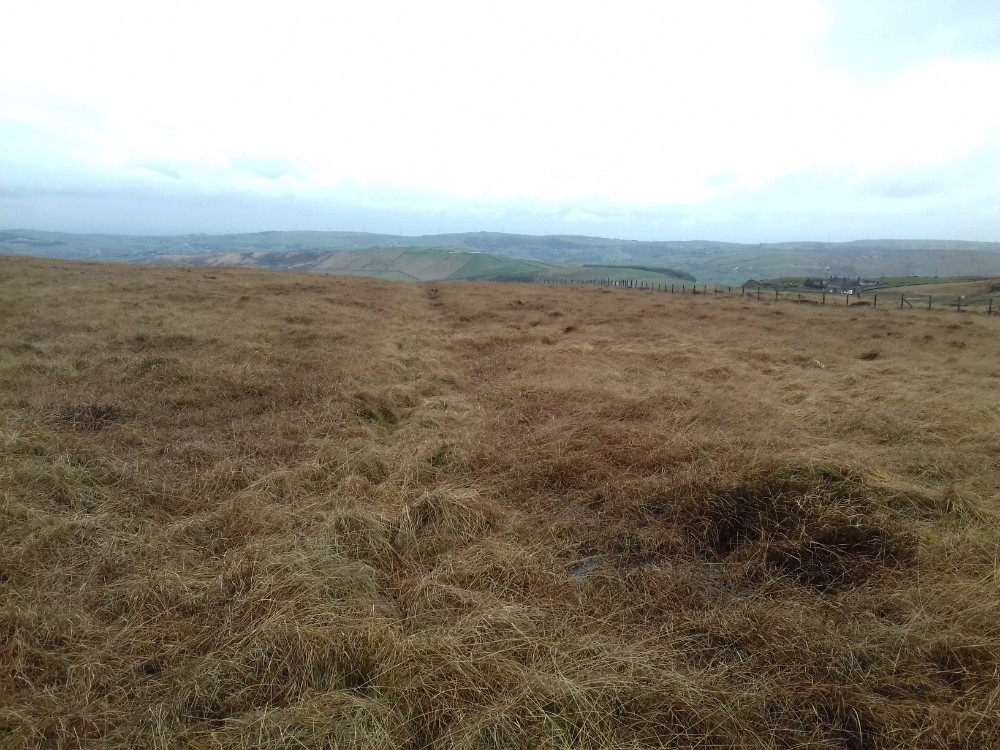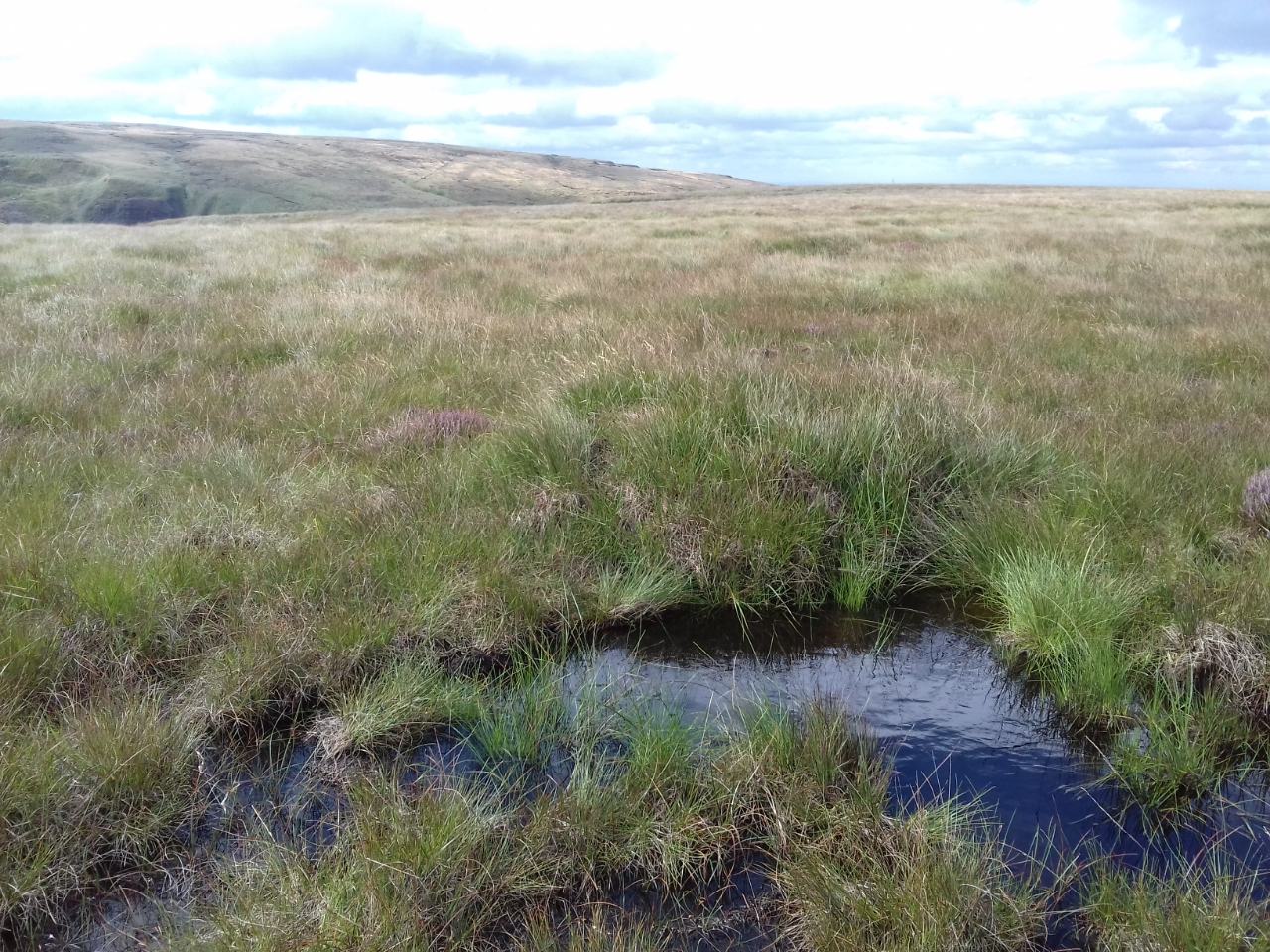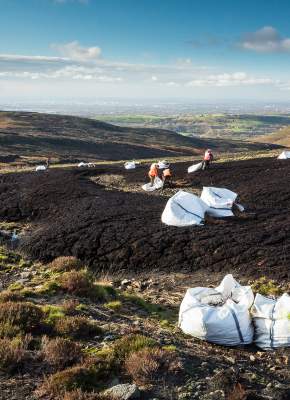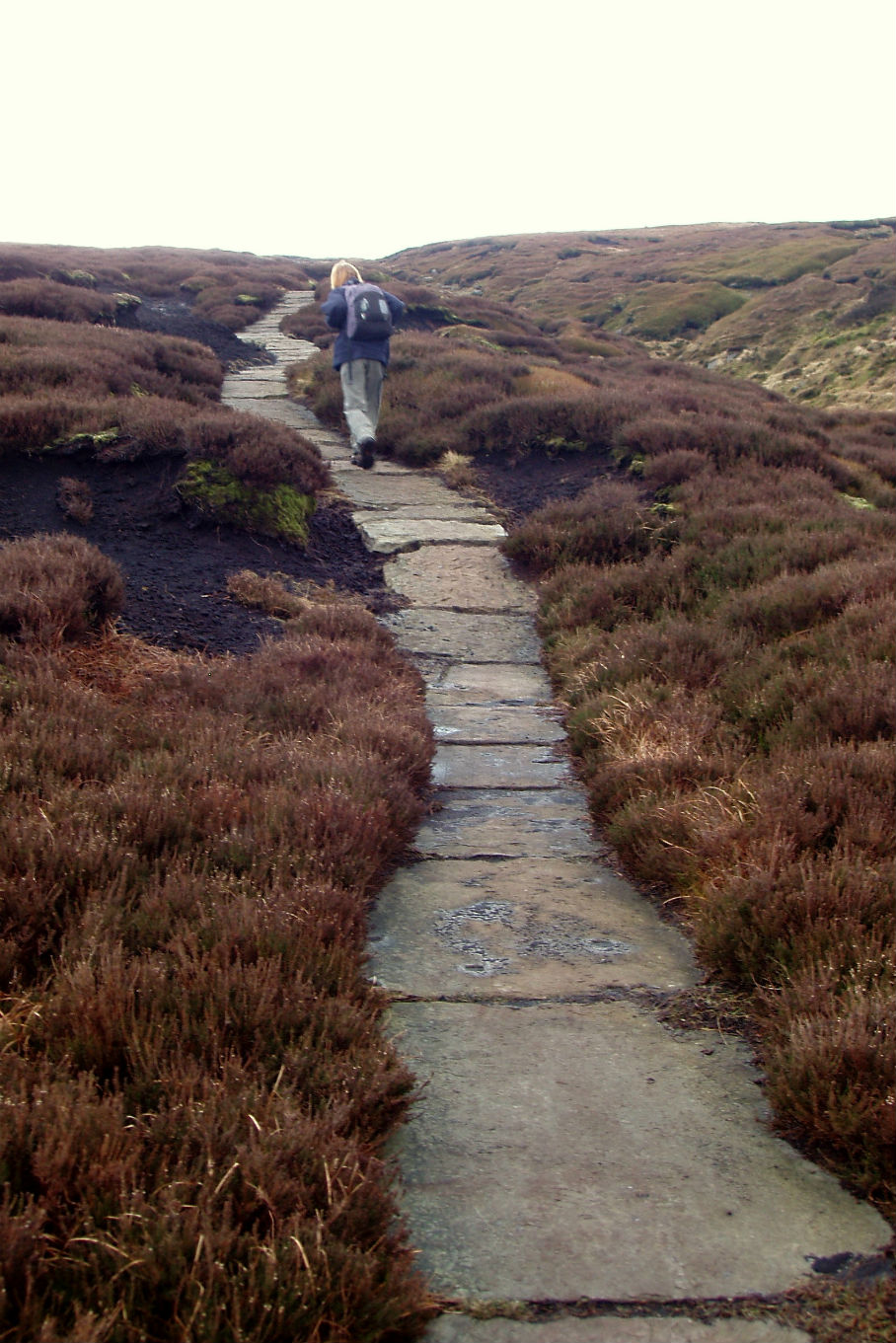Blanket bog restoration at a landscape scale on Saddleworth Moor
In partnership with landowners, we overcame landownership and funding boundaries to deliver conservation work at a landscape scale.
Between 2012 and 2017 we brought a severely degraded moorland landscape back to life by blocking gullies and re-vegetating bare peat to benefit wildlife and reduce flood risk in urban areas.
The pictures to the right show Saddleworth Moor before and after grip blocking.
Returning the moor to its former state
Blanket bog on Saddleworth Moor, within the South Pennines Special Area of Conservation, lies above the urban fringes of eastern Greater Manchester, which are often prone to flooding and have high population densities. In a severely degraded state due to a legacy of industrial pollution, its value for wildlife was severely affected, grazing for livestock was poor, and the site was visually bleak for visitors.
With the aim of returning the site to functioning blanket bog we re-vegetated bare peat and blocked gullies to slow the flow of water from the hills, reducing the risk of flooding below and enhancing the site’s value for wildlife.
Our work included installing dams in eroding gullies, spreading lime to reduce the acidity of the peat soils and fertiliser to encourage plant growth. We covered bare peat with cut heather ‘brash’, sowed fast-growing grasses and moorland plants, and planted heather, bilberry, cross leaved heath and sphagnum mosses across an area the size of 900 football pitches.
We worked with landowners and partners across moorland and valley landscapes over six years and five separate projects to repair damaged blanket bog, eliminate invasive plants, and develop a woodland creation strategic plan to reduce the risk of flooding.
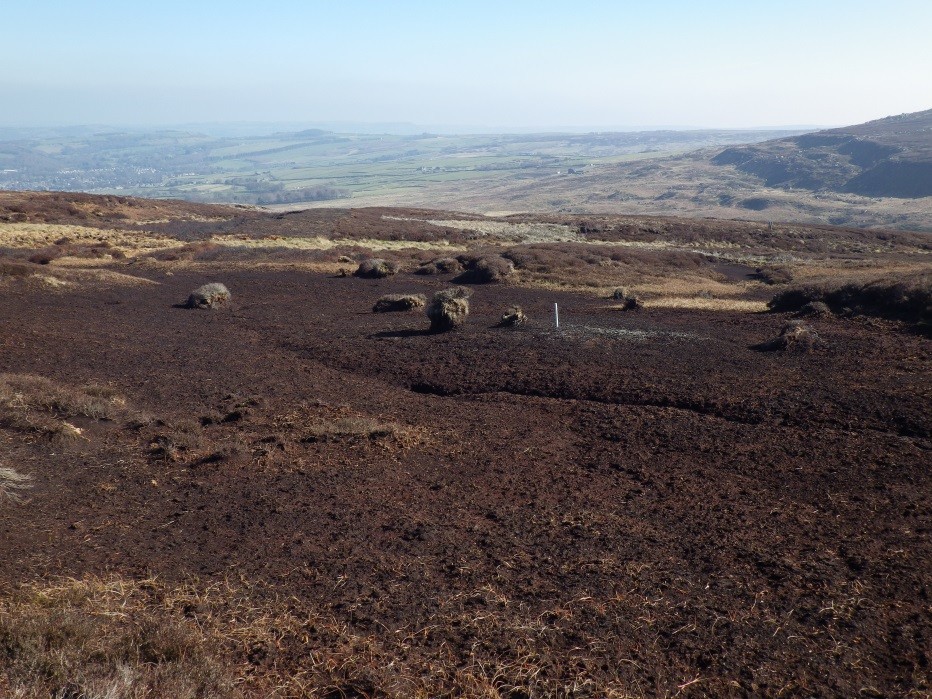
Facts and figures relating to the project:
- Over 2,000 dams were installed to raise the water table and slow the flow of water
- 8,500 bags of heather brash were spread over the site to stabilise the bare peat and create suitable conditions for establishment of moorland plants
- 700 hectares were treated with lime, seed and fertiliser
- 70,000 plug plants of heather, bilberry and cross leaved heath were planted to improve diversity
- Over 8 hectares of flailing work were undertaken along with the seeding of 34 hectares with dwarf shrub species to encourage greater biodiversity
- 1 hectare of particularly dense purple moor grass was treated with herbicide and seeded with dwarf shrub species
- 22,000 handfuls of sphagnum moss were translocated and planted
- 250,000 plugs of propagated sphagnum were planted
- 4,050 litres of sphagnum moss beads were spread
